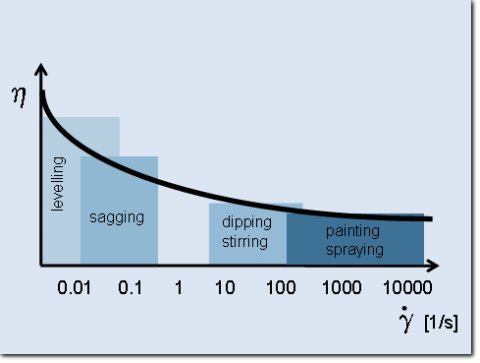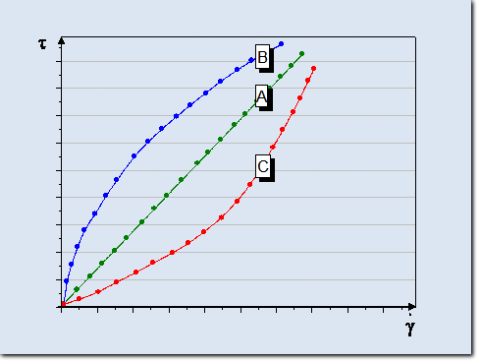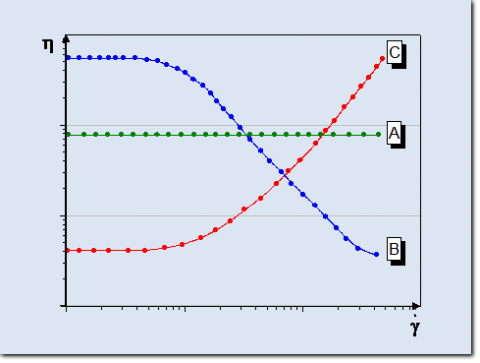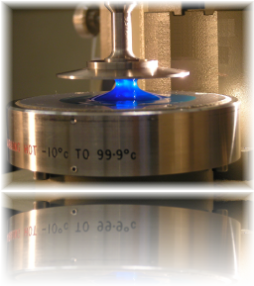Flow curve - Homepage WEE-Solve GmbH
Main menu:
- Home
- Menütrennlinie 7
- About us
- Menütrennlinie 1
- Fractionation
- Menütrennlinie 4
- Rheology
- Menütrennlinie 5
- Contract research
- Menütrennlinie 6
- Analysis
- Menütrennlinie 8
- Contact
Flow curve
In order to determine the general flow behaviour of a sample the viscosity is measured as a function of the shear rate in a rotational rheometer. For the presentation of the data either the viscosity or the shear stress is plotted against the shear rate. The thus obtained graph is called flow curve. In many cases the flow curve is the first and usually also the most important rheological measurement. It shows the flow behaviour for low shear rates (slow motions) as well as high shear rates (fast motion). Low shear rate appear e.g. at the levelling or sagging of paints, sedimentation or slow flowing. High shear rates (> 1000 1/s) occur at the majority of technical processing like coating, spraying or flowing though pipes.
By means of the flow curve it is possible to read the viscosity for the shear rates of interest. If someone is interested in the flow behaviour during the levelling the viscosity at shear rates below 1 1/s are important. For the behaviour "on the machine" the data at high shear rate are crucial.
For a better visualisation the following flow curve shows typical shear rates for some practical applications.

Typical shear rate for some technical applications.
Basically someone distinguish between ideal viscous, shear-

Flow curves: (A) Ideal viscous; (B) shear-

Viscosity curves: (A) Ideal viscous; (B) shear-
A) For the ideal viscous flow the viscosity is independent on the shear rate. This behaviour is common for homogenous low molecular weight fluids like lubricating oil. For such samples it is sufficient to indicate one value for the viscosity at a certain temperature. The viscosities of ideal viscous samples are normally determined by means of capillary of rolling ball viscometers. The accuracy of these methods lies in the order of one tenth of a percent and are therefore superior to rotational rheometers.
B) For most of the inhomogeneous fluids, for polymer solutions and for the majority of paste like and creamy products, the viscosity decreases with increasing shear rate. This behaviour is called shear-
C) Shear-
For samples that are not ideal viscous it is not sufficient to indicate only the viscosity. It is always necessary to specify also the shear rate that was used for the measurement.
